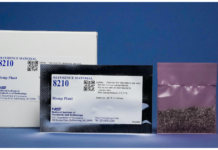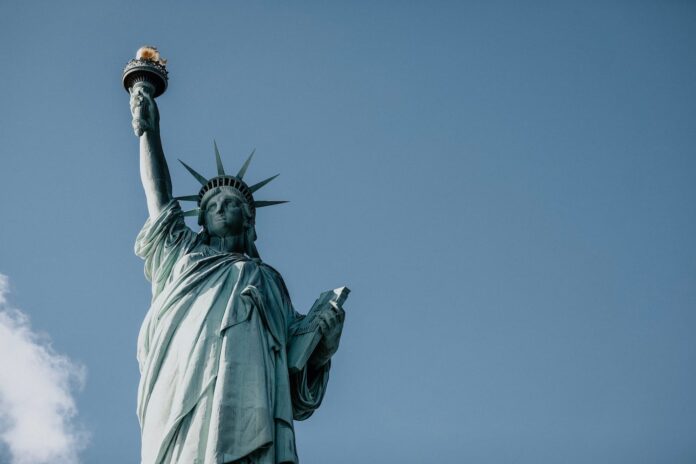ALBANY, NY – The State of New York opened a licensing window on Wednesday, making hundreds of new adult-use licenses available to current and would-be retailers, cultivators, processors, and distributors. But unless the state gets a handle on the percentage of licenses allocated to each category, it faces a massive cultivation glut and a continuing challenge from the illicit retailers currently undermining legal dispensaries.
The New York Office of Cannabis Management (OCM) previously approved 333 conditional licenses, 81 percent of which went to cultivators. To date, the OCM has issued 40 conditional licenses for processing and distribution and 23 conditional licenses for adult-use dispensaries to grow, distribute, and sell cannabis.
In addition to the shortage of licensed adult-use retailers, an estimated 2,000 illegal dispensaries operate openly across the state, taking an enormous bite out of the legal market and leaving existing licensed cultivators with a massive amount of product they can’t feasibly sell.
“Assuming the same rate of sale until the end of the year … the remaining amount that will not be sold is approximately 564,000 pounds, or about 96 percent of all currently unsold product,” OCM First Deputy Director Patrick Mckeage said in an affidavit filed August 9.
Using the OCM’s $42 million valuation for the 8,500 pounds of illicit product it seized during 246 inspections, New York’s cultivators could be left holding about $2.8 billion in unsold legal cannabis at the end of the year.
While the state “anticipates issuing a significant amount of retail licenses,” expectations don’t solve problems. The market expansion announcement does not address the necessary balance of license types to build a sustainable retail environment. Governor Kathy Hochul has said she expects to see more than 1,000 legal cannabis shops across the state next year, but so far New York is woefully short of the 150 shops it initially expected to be open by now.
Because the process for opening a dispensary in New York is lengthy and resource-intensive, the Cannabis Control Board (CCB) believes the number of licenses issued will be larger than the number of stores that will be able to open during this phase. According to the CCB, this approach is designed to protect against market volatility, support small businesses entering the market, and ensure expanded consumer access. But the approach does little to address the gigantic regulatory issues the industry has seen play out in mature West Coast markets where shrinking profit margins and complaints about thriving illicit markets have driven MSOs like Curaleaf to close cultivation and production operations in California, Colorado, and Oregon this year.
“We’re growing a cannabis industry that will generate millions in revenue annually, create or sustain thousands of jobs, and prioritize equity and safety,” said Hochul. “We know there’s room for improvement as New York works to launch a brand-new cannabis industry and crack down on illicit operators, and I’m committed to working with all stakeholders to get the job done right.
“My administration is laser-focused on shutting down illegal storefronts, protecting the health and safety of children, and helping small businesses thrive,” she added. “We will continue working to build the most equitable adult-use cannabis industry in the nation that invests in communities and rights the wrongs of the past.”
In addition to licensing, the OCM is launching new partnerships with local and state agencies to significantly increase fines, penalties, and store closures. This includes a partnership with the New York Attorney General’s Office to train municipalities and county attorneys to pursue padlocking orders against illegal operators.
Fines for illegal cannabis sales start at $10,000 per day, increasing to $20,000 for the most egregious conduct. Additional penalties can be assessed for violations under tax laws.
“Expanding the number of cannabis licenses while simultaneously taking action against unlicensed sellers is a common-sense way to support small businesses and incentivize entrepreneurs to legally enter the marketplace,” said New York Attorney General Letitia James. “My office worked closely with the Office of Cannabis Management and Governor Hochul to shut down unlicensed dispensaries, and we will continue to coordinate with our partners in government to ensure New York’s cannabis laws are upheld.”
According to the OCM, moving through the licensing process could take anywhere from six to twelve months depending on the time it takes to find a retail location and conduct renovations. However, that timeline remains theoretical with New York Supreme Court’s August 8 injunction that effectively halted the retail licensing process. The court is expected to make a pivotal decision this week.
The following estimates have been provided by the OCM for this round of licensing:
- Retail Dispensary: 500 to 1,000.
- Microbusiness: 220.
- Indoor Cultivation (Tier 1): 20.
- Indoor Cultivation (Tier 2): 20.
- Processor (Type 1: Extracting, plus all activities of Types 2 and 3): 55.
- Processor (Type 2: Infusing and blending, plus all activities of Type 3): 100.
- Processor (Type 3: Packaging, labeling, and branding, including for the performance of white-labeling agreements only): no allocation limit; the OCM will review on a rolling basis.
- Distributor: 30.
The new license application period closes December 4.










[…] comprehensive review to identify opportunities for improvement and develop a new strategic plan for the state’s disappointing rollout. Hochul tapped the Commissioner for the Office of General Services Jeanette Moy to rejuvenate the […]
[…] Hundreds of Cannabis Business Licenses Won’t Fix New York’s Problem […]